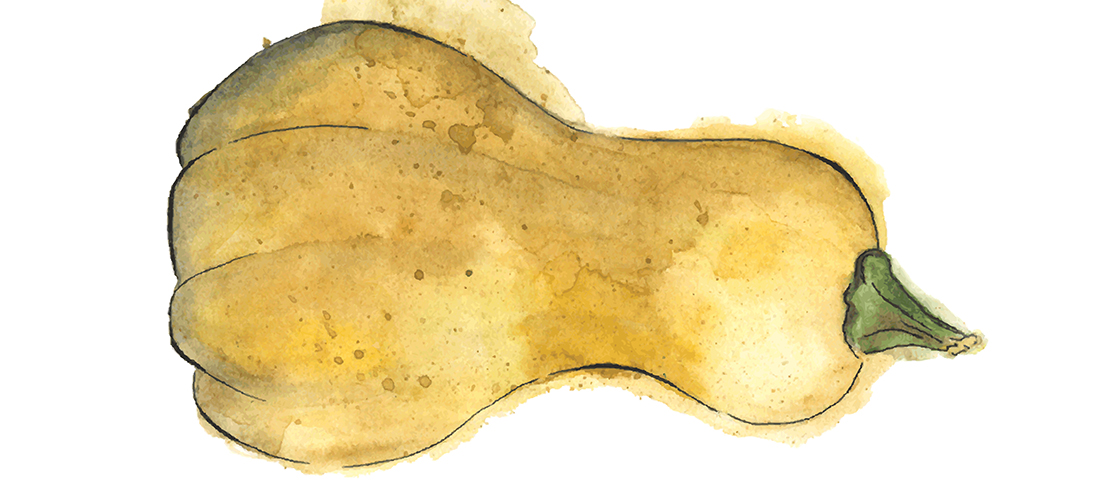
What’s a squash lover to do?
By Jan Leitschuh
You know the old joke about zucchini in small towns? How you dare not leave your car windows down on the street or some neighbor will kindly donate a bagful of the oversized green vegetables, thanks to their prolific abundance. Maybe that friendly donor was even you.
Well, that never happened here. Not after our first year of gardening.
Sure, that initial garden season, we were flush. The bugs hardly knew we were here. If a person finally licks his or her deer problem (more on that in a later column), what’s left to decimate the summer squash? Vine-killing squash borers, in spades.
Word of our organic venture zapped out swiftly on the bug internet. Now we have well-established borer populations that allow us one — count ’em, one — delicious early flush of zukes, and then they take out the vines at the base like commandos.
Working organically, I had a little luck spraying a kaolin clay barrier product developed for orchards, called “Surround,” but I generally forget to apply it in time. I also plant summer squash in flushes, trying to space out several plantings to have enough to freeze. But you have to remember to do this in a timely fashion.
Squash vine borers (Melittia cucurbitae) are a major problem for organic gardeners. The adult squash vine borer is a colorful moth, 5/8 inch long with orange and black legs. The adult may be mistaken for a wasp in the garden. Young larvae hatch from dark reddish brown eggs and grow to about one inch with a whitish body and brown head.
Borer larvae tunnel into the base of the plant and interrupt the flow of water and nutrients. The larvae feed on plant tissue, hollowing it out, so the plants begin to wither. The homeowner waters, thinking the plants are dry. But the vines don’t perk up, instead continuing to yellow and die. If you cut open the stem of a decimated plant, you may see several. I feed them to the chickens when I can.
What’s a squash lover to do? Squash can help lower blood sugar, being a good complex carb. It’s known for its ability to boost the immune system, help prevent certain types of cancer, improve vision, protect the skin, strengthen the bones, reduce blood pressure, maintain fluid balance, regulate blood sugar and cholesterol, improve digestion, and maintain proper circulation. It’s good stuff, and it’s tasty too. Squash is the ultimate easy side dish, amenable to any number of spices and flavorings.
This is the year I decided to learn about winter squashes. Yes, I could have gone with physical barriers like row covers or wrapping individual stems of my summer squash but, until retirement looms, those efforts will remain spotty.
When I learned the best defense against borers is to plant squash varieties that are squash vine borer-resistant, I started researching. And first on the list was a favorite, a winter squash — butternut.
Waltham Butternut squash (Cucurbita moschata) is said to be reasonably tolerant of the vine borer, as are most other butternut types. Showing up as summer drifts into the cooler relief of fall, we love butternut squashes for their wonderful taste, and use them in soups, casseroles and baking. What is easier than halving a butternut, scooping out the little pocket of seeds at the ball end, dropping in some butter or olive oil and microwaving — or better, yet, roasting, to bring out the sweetness?
The flesh of butternut squash is close-grained and sweet-nutty. The beauty of butternut, and its cousin acorn, is that it rises to nearly any flavor occasion.
Want sweet? Sprinkle some cinnamon, brown sugar, rum-soaked raisins, maple syrup, pecans, apples, honey, walnuts, pear-fig sauce, orange zest, peach-habanero jam or any combo of the above that suits your taste buds, and roast for a healthy dessert. Any of these stand in for dessert, or go great with pork as a fall side dish.
Want savory? Any number of spices can change the character of this versatile veggie nightly: curries, cayenne, sage, bouillon stock granules, garlic and olive oil, oregano and hot pepper flakes, thyme, simple salt and pepper. Bake fries from them, smother them in cheese, cram them into chicken stock to make soups. Baked, roasted, caramelized, mashed, cubed, casseroled, shredded and hashed, frittered and fried, there are myriad iterations. Since they will store for many months in a cool pantry, basement or under-cabinet, they’re fine for winter use. Butternuts are also easy to grow so they make good choices for novice, as well as experienced, gardeners. Next year, they will have a place in our garden.
There are other choices beyond butternut. The University of Illinois Extension reports that Blue Hubbard (Cucurbita maxima “Blue Hubbard”) performs best against squash vine borers, followed by the slightly less resistant Cucurbita maxima “Boston Marrow” and Cucurbita maxima “Golden Delicious” varieties of hubbard squash. The extension also reports that two pumpkin varieties, Cucurbita pepo “Connecticut Field” and Cucurbita pepo “Small Sugar” — both heirloom varieties — also perform well. All of these are good keepers and cheerily decorative in autumn displays.
Another Mediterranean heirloom called cucuzzi (Lagenaria siceraria), also known as either the snake gourd or Italian edible gourd — though technically not a squash — is said to be indistinguishable in taste from a sweet squash or pumpkin and is highly resistant to vine borers. The long slender fruit is pale green and twists and spirals like a snake, hence its most common name.
Finally, the hefty, green-striped cushaw (Cucurbita mixta) is an old heirloom and one tough vegetable, grown by native Americans since prehistoric times. Drought tolerant and insect resistant — including the squash vine borer — it’s also reported to be an excellent keeper and great-tasting variety for use in pies or for snacking on seeds. You get your money’s worth with a cushaw squash — they can grow to be massive, though homeowners may wish to pick them smaller. It’s the ultimate winter storage food, so if you get a big one be ready to prepare it all and freeze the rest or serve it up to a crowd.
Here are two simple recipes to render your winter squash meals delicious, however you acquire them.
Winter Squash Caramel
2 medium butternut squash
6 tablespoons melted butter
1/4 cup light brown sugar, packed
1 1/2 teaspoons sea salt
1/2 teaspoons freshly ground black pepper
Preheat oven to 400 degrees. Peel and cube squash, removing seeds. In a bowl, toss cubes with the remaining ingredients. Spread in a baking dish and roast for 45 minutes to an hour, turning occasionally, until glaze begins to caramelize. Remove when tender and serve hot.
Easy Spicy-Savory Squash
Using the same prep as above, instead toss cubes with olive oil, thyme, black pepper, salt and a little cayenne pepper. Roast in a baking dish, single layer, covered, for 30-45 minutes, until soft, then stir in 1/4 cup grated Romano cheese. Sprinkle additional cheese on top and serve hot. PS
Jan Leitschuh is a local gardener, avid eater of fresh produce and co-founder of the Sandhills Farm to Table Cooperative.





